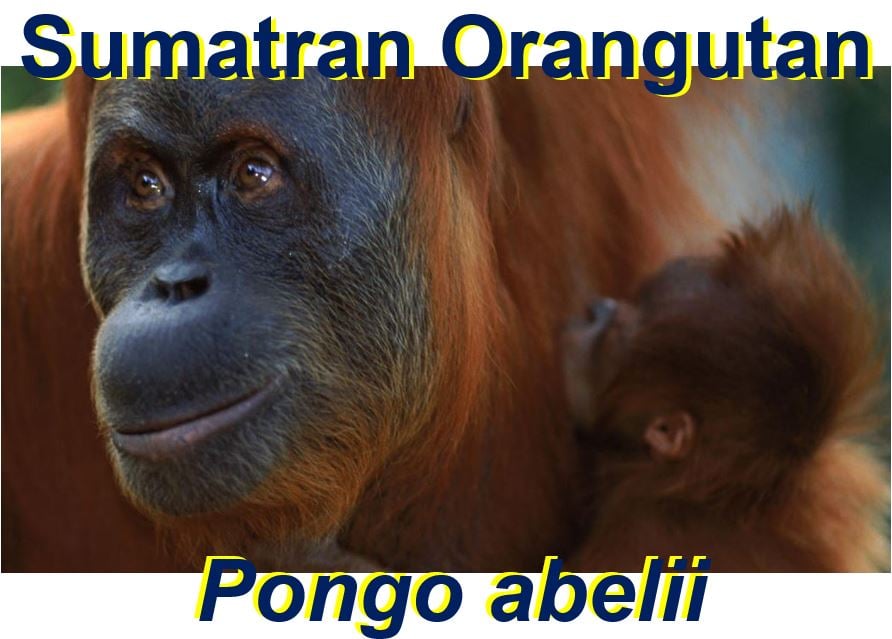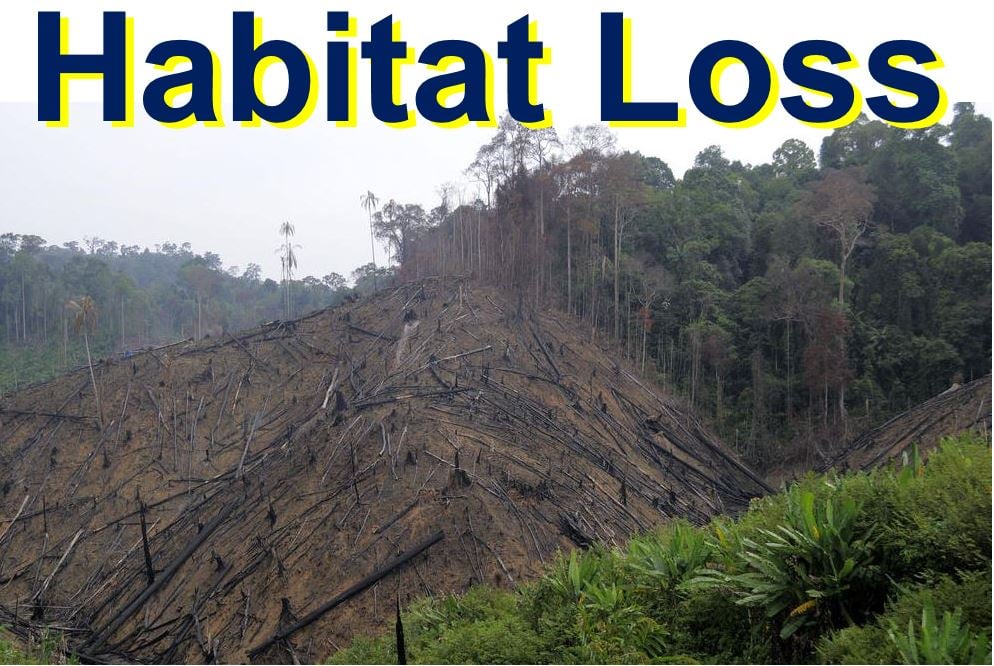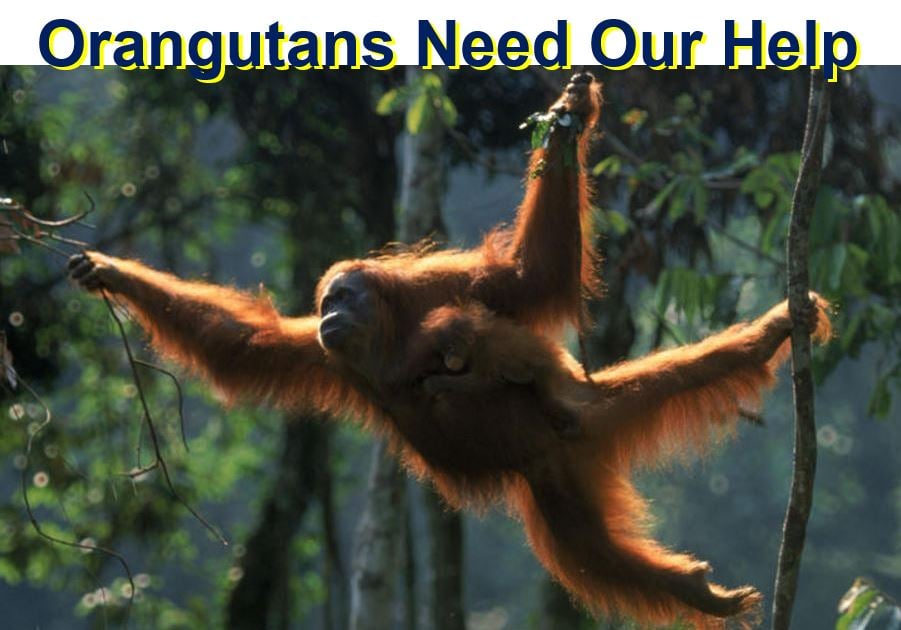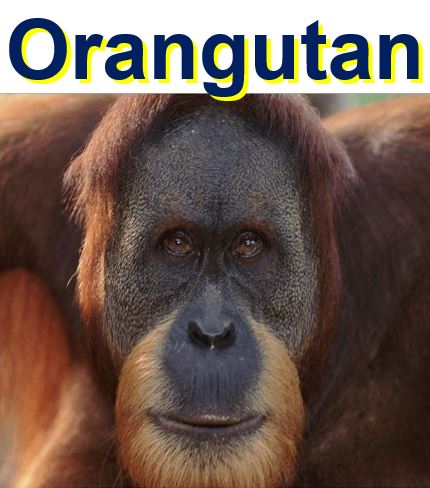The Sumatran orangutan population is over double previous estimates, but with the rate at which their habitat is making way for agricultural purposes, devastating forest fires, plus the current level of poaching, this welcome news is not likely to last very long, says an international team of researchers.
There are two species of orangutans, the Sumatran orangutan (Pongo abelii) and the Bornean orangutan (Pongo pygmaeus), found only in the forests of northern Sumatra and Borneo respectively.
The population of the critically endangered Sumatran orangutan (also spelled orang-utan, orangutang, or orang-utang) is 14,600, the researchers reported in the journal Science Advance (citation below) after conducting a new study – nearly eight-thousand more individuals than previous estimates.
 Orangutans are frugivores (feed on fruit) and play a crucial role in the dispersal of seeds over a huge area. If they were to disappear, so would several tree species, especially those with larger seeds. (Image: worldwildlife.org)
Orangutans are frugivores (feed on fruit) and play a crucial role in the dispersal of seeds over a huge area. If they were to disappear, so would several tree species, especially those with larger seeds. (Image: worldwildlife.org)
Higher number does not mean there are more of them
The team stresses that the higher number is not due to an increase in the primate’s population – but because the latest survey was more wide-ranging, i.e. it included more areas where the animal is known to live.
Moreover, if the deforestation of this arboreal great ape’s habitat continues as planned, up to 4,500 individuals could be gone by 2030. Serge Wich, who works at Liverpool John Moores University, and colleagues called on the Sumatran national and provincial authorities to introduce legislation to protect forests where orangutans live.
To properly plan future conservation activities of any animal or plant species, having an accurate estimate of its population size is crucial.
Therefore, to cover the Sumatran orangutan’s complete range, researchers from Indonesia and Europe carried out surveys during which over 3,000 nests on more than 200 line transects covering approximately 300 kilometres were counted, which equalled about 14,000 individuals.
 The species’ name derives from the Malay words for ‘person of the forest’. Sumatran orangutans are critically endangered. According to the World Wildlife Fund: “The Sumatran orangutan is almost exclusively arboreal, living among the trees of tropical rainforests. Females virtually never travel on the ground and adult males do so rarely.” (Image: worldwildlife.org)
The species’ name derives from the Malay words for ‘person of the forest’. Sumatran orangutans are critically endangered. According to the World Wildlife Fund: “The Sumatran orangutan is almost exclusively arboreal, living among the trees of tropical rainforests. Females virtually never travel on the ground and adult males do so rarely.” (Image: worldwildlife.org)
A previous study had estimated there were just 6,600 individuals living in Northern Sumatra. However, that study had not included orangs living at higher altitudes, in logged forests, and west of Lake Toga.
Future deforestation terrible for orangutan outlook
The primatologists then examined a number of future deforestation scenarios based on current land-use plans in the area using computer simulation.
According to their simulations, up to 4,500 orangutans could vanish by 2030 if these plans go ahead.
Therefore, even though the current higher estimate is great news, orangutan numbers will probably decline at an accelerated rate over the long term, unless something can be done to protect them.
Prof. Wich, who works at the University’s Faculty of Science, talked about his and his colleagues’ excitement at the higher numbers, but also warned regarding the animals’ future:
“It was very exciting to find out that there are more Sumatran orangutans than we thought, but this does not mean that we can be complacent.”
“Numerous development projects are planned in the area that – if they are not stopped – could sharply reduce the number of orangutans over the coming years.”
 Orangutan habitat is being lost at an alarming rate, mainly due to fire and conversion of forests to oil palm plantations and other agricultural development. Widespread forest fires, many set deliberately to clear land for plantations, are becoming a regular disaster. Thousands of these slow-moving apes are believed to have burned to death, unable to escape the flames. (Image: worldwildlife.org)
Orangutan habitat is being lost at an alarming rate, mainly due to fire and conversion of forests to oil palm plantations and other agricultural development. Widespread forest fires, many set deliberately to clear land for plantations, are becoming a regular disaster. Thousands of these slow-moving apes are believed to have burned to death, unable to escape the flames. (Image: worldwildlife.org)
“We will need to continue to work together with the Indonesian government and other parties to ensure that this scenario will not happen. A difficult task, but we all hope that we can turn the tide for the Sumatran orangutan.”
“We would like to see appropriate environmental impact assessments conducted for all developmental planning that concerns forests in the orangutan range so that disruption to their habitat may be avoided or reduced to a minimum.”
 Without our help, the orangutan’s future looks bleak. Within a few decades there probably won’t be any wild orangutans. (Image: worldwildlife.org)
Without our help, the orangutan’s future looks bleak. Within a few decades there probably won’t be any wild orangutans. (Image: worldwildlife.org)
Project leader Hjalmar Kuehl, who works at the Max Planck Institute for Evolutionary Anthropology and the German Centre for Integrative Biodiversity Research (iDiv), added:
“The Sumatran orangutans are the first ape taxon for which estimates of population size have changed considerably when taking a closer look and they are likely not the last one.”
“Given the rapid development in field and analytical methods, we will likely see upwards or downwards corrections of the estimated population sizes for several of the other 12 ape taxa in the years to come. This will help us to better inform conservation policy and management and provide guidance for the improved protection of great apes.”
Citation: “Land-cover changes predict steep declines for the Sumatran orangutan (Pongo abelii),” Serge A. Wich, Ian Singleton, Matthew G. Nowak, Sri Suci Utami Atmoko, Gonda Nisam, Sugesti Mhd. Arif, Rudi H. Putra, Rio Ardi, Gabriella Fredriksson, Graham Usher, David L. A. Gaveau and Hjalmar S. Kühl. Science Advances. 4 March 2016. DOI: 10.1126/sciadv.1500789.
Video – Refugees of the Lost Rainforest: Sumatran Orangutan
This BBC documentary looks at the threat to the Sumatran Orangutan. It also includes the first-ever filmed birth of a captive orangutan.

